1. The Dream of Perfect Living
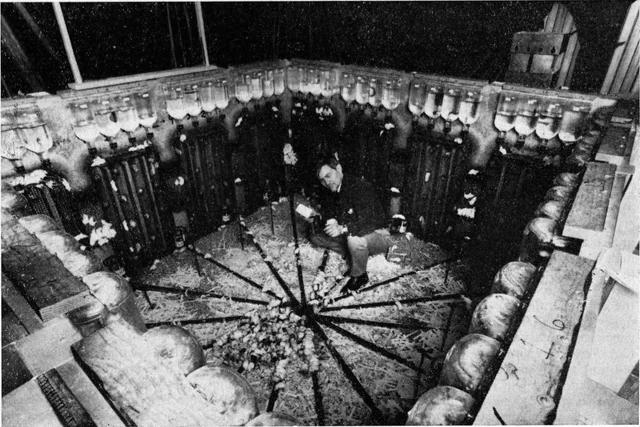
Between 1958 and 1962, American ethologist John B. Calhoun designed “Universe 25,” a large, enclosed habitat for mice intended to study population dynamics under ideal, stress-free conditions. The structure was a metal pen offering abundant food, water, bedding, and nesting boxes, with no predators or disease, a literal mouse utopia. Calhoun’s goal was to see if removing all external pressures would allow the population to grow indefinitely and maintain social harmony. The experiment began with four pairs of mice, and for the first few months, the colony thrived, validating the initial hypothesis that limitless resources could foster perfect community living. This peaceful start made the eventual collapse all the more shocking.
2. The Birth of a Mouse Utopia
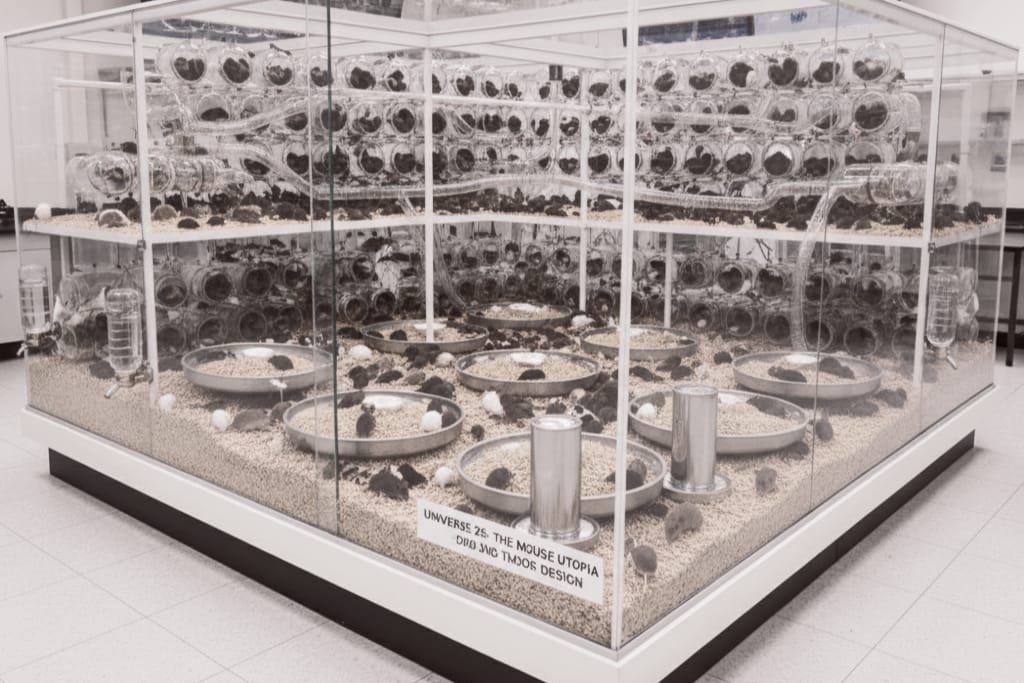
The habitat was meticulously engineered to house up to 3,000 mice, featuring 256 interconnected nesting cells and multiple feeding and watering stations to prevent any resource scarcity. Calhoun intentionally provided more than enough space and food to eliminate the traditional pressures that restrict animal populations. This design aimed to isolate social and psychological factors as the sole forces influencing the colony’s future. The initial mice established territories, engaged in normal mating behavior, and successfully reared their young, leading Calhoun to believe he was witnessing a model of abundance-driven societal success. The experiment’s early phase, known as the “Strive Period,” was marked by rapid, healthy, and functional growth.
3. Population Explosion
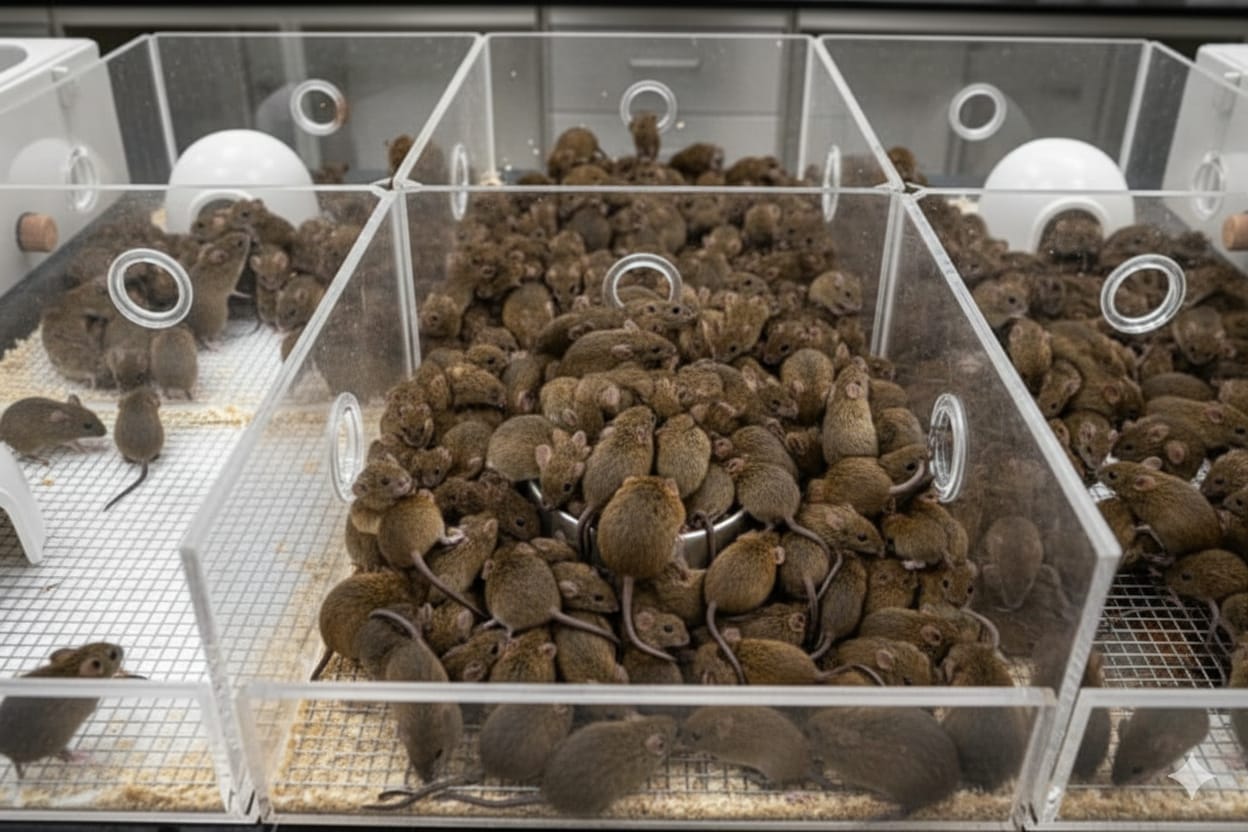
With all needs met, the mouse population doubled approximately every 55 days, growing exponentially in a phase Calhoun dubbed the “Exploit Period.” By day 315, the colony swelled to over 600 mice. During this time, the first generation of mice exhibited healthy, functional behavior: mothers were attentive, males defended their territories effectively, and the overall social structure remained robust. This rapid expansion, however, masked an emerging problem: though there was physical space, the social environment was quickly becoming strained. The experiment demonstrated that initial abundance successfully spurred population growth, but it failed to predict how the mice would adapt to being the only limit on their own expansion.
4. Crowding Stress Emerges
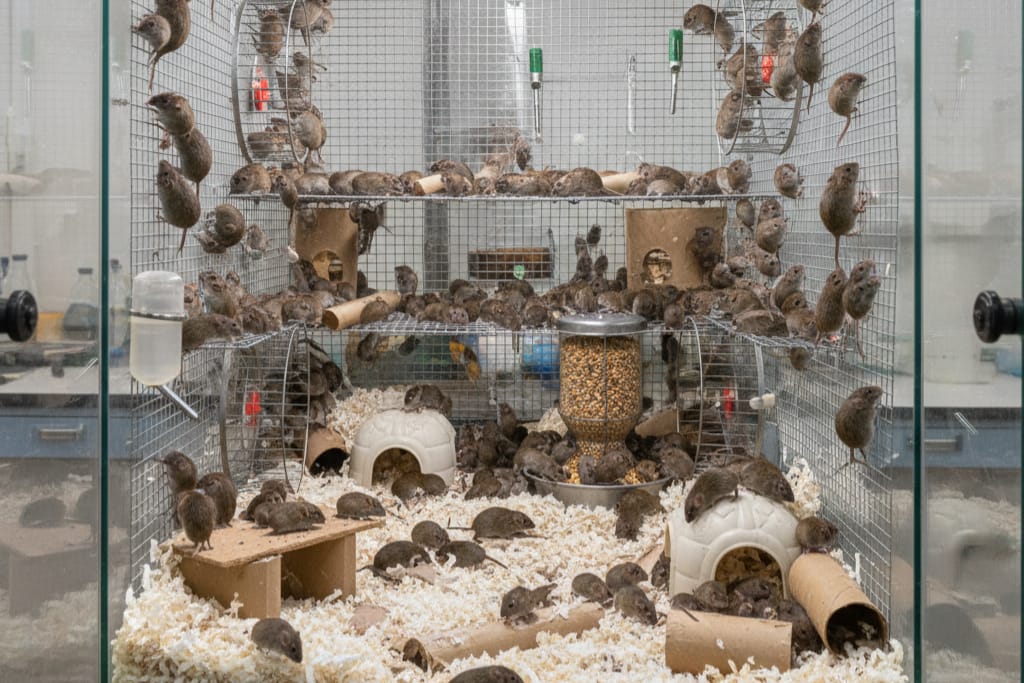
Despite the vastness of the enclosure, the mice began to cluster in specific, preferred feeding and social areas, leading to psychological overcrowding even as other sections remained empty. Calhoun noted that this non-uniform distribution created pockets of high stress. Dominant males found it impossible to defend their territories effectively in the dense common spaces, leading to constant, exhausting skirmishes. Furthermore, the constant close proximity became a source of irreversible social tension. The mice were technically not overcrowded by the enclosure’s volume, but their inability to escape constant interaction was the true source of rising stress and aggressive behavior, causing the first signs of social dysfunction.
5. The Breakdown of Maternal Care
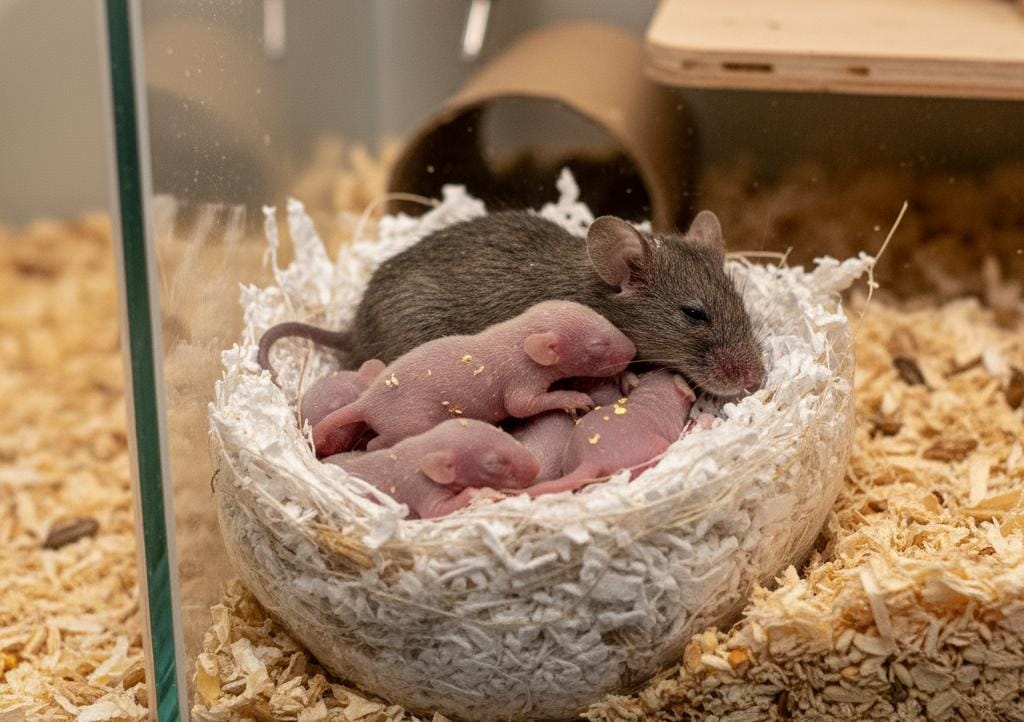
As stress levels intensified, a profound and disturbing change occurred in female behavior: the collapse of maternal role functioning. Mothers, overwhelmed by the constant social pressure, began to abandon their pups, nest improperly, or, in the most shocking instances, actively attack and kill their own young. This resulted in an infant mortality rate that soared to over 90% in some periods. The survival mechanism of nurturing, fundamental to any society, was dissolving. With a lack of strong, stable mothers, the colony’s next generations were not being properly socialized or protected, ensuring a future of social incoherence and eventual demographic failure, regardless of the available resources.
6. The Rise of Hyper-Aggression
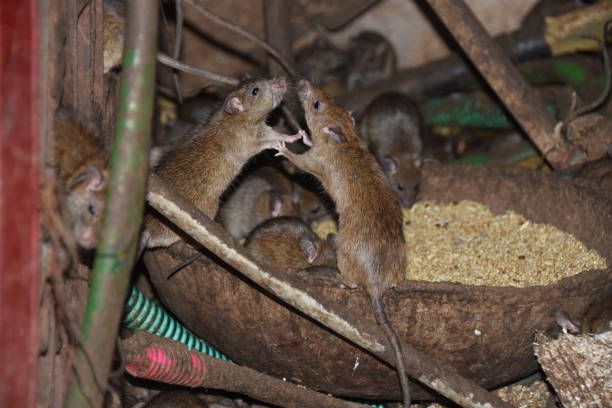
A group of younger males, unable to establish traditional territories or find meaningful social roles, became increasingly violent and dysfunctional. These “outcast” males, rejected from normal social circles, began to randomly attack other mice, including females and pups, with no apparent provocation or purpose. Grooming, a key social bonding ritual, ceased, and injuries became common. This hyper-aggressive behavior was not driven by competition for resources, which were abundant, but by a psychological loss of purpose and place within the social order. Violence became an aimless expression of profound social and psychological disruption, constantly destabilizing the entire colony’s environment.
7. The Appearance of the “Beautiful Ones”
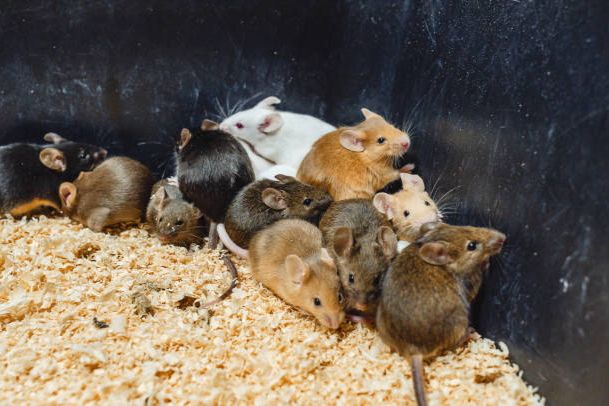
One of the most bizarre and often-cited outcomes was the emergence of the “Beautiful Ones.” These were a distinct group of males who withdrew completely from social competition, including mating and fighting. They instead spent their entire existence eating, drinking, and obsessively grooming themselves. Their fur was immaculate and unscarred, making them visually pristine. However, they were socially extinct, they never mated, never defended, and had no role in the colony’s future. Calhoun saw these mice as perfect examples of self-absorption and social emptiness, choosing flawless comfort and safety over the responsibilities and challenges of communal survival.
8. Social Collapse of Females
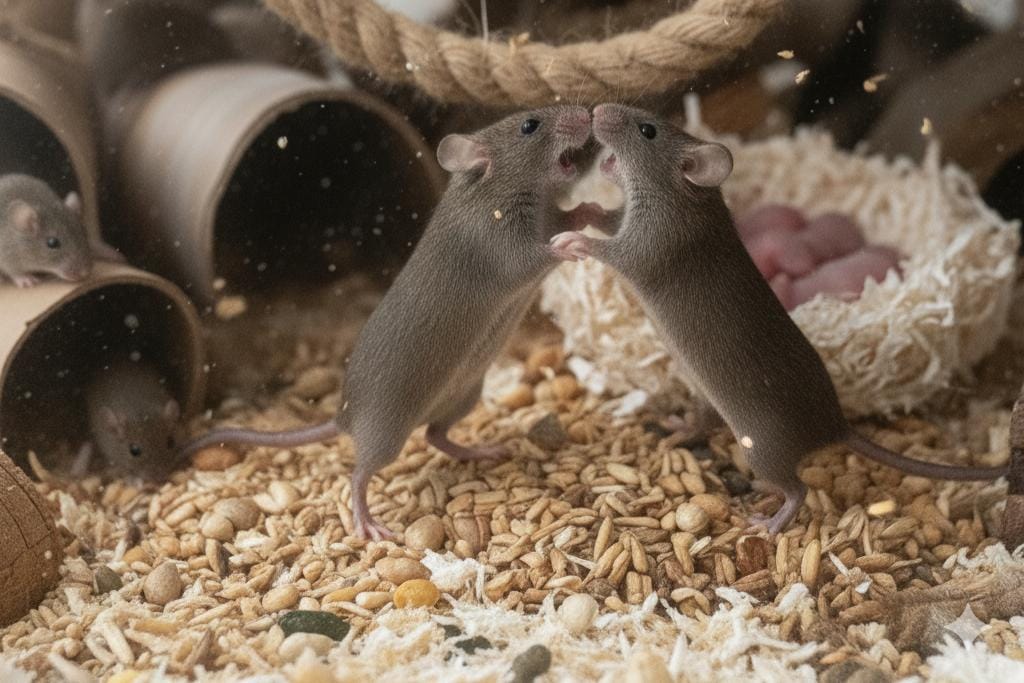
The females’ response to the crowding stress mirrored the males’ extreme withdrawal or aggression. Some females became highly aggressive, taking over the protective and defensive roles traditionally held by males, even fighting viciously to guard their nesting areas. Conversely, many others became completely withdrawn, isolating themselves and refusing to participate in any social interaction, including mating or nesting. This widespread loss of stable maternal and reproductive roles created a society incapable of perpetuating itself. Calhoun concluded that the loss of traditional, meaningful responsibilities had fractured the social structure to a point where abundance offered no defense against collapse.
9. Declining Birth Rates
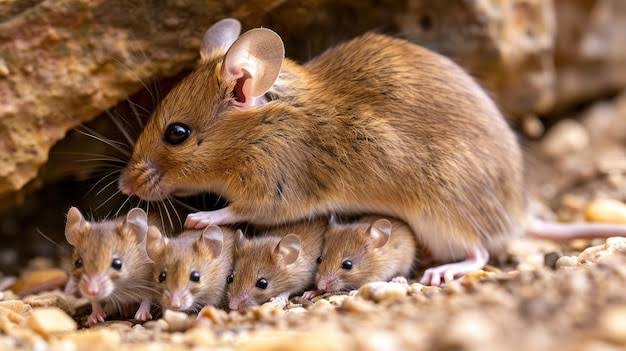
By day 560, the mouse population’s growth peaked and then sharply reversed. Despite having unlimited food and space, the birth rate plummeted as the majority of females stopped reproducing entirely. The few litters that were born faced near-total infant mortality due to the pervasive breakdown of maternal care. Reproduction, the most basic engine of biological success, had effectively been turned off. The colony entered a phase of demographic freefall, a society where the future generation was systematically failing to materialize. This demonstrated that psychological and social health are more critical for long-term survival than mere material wealth.
10. Breakdown of Purpose
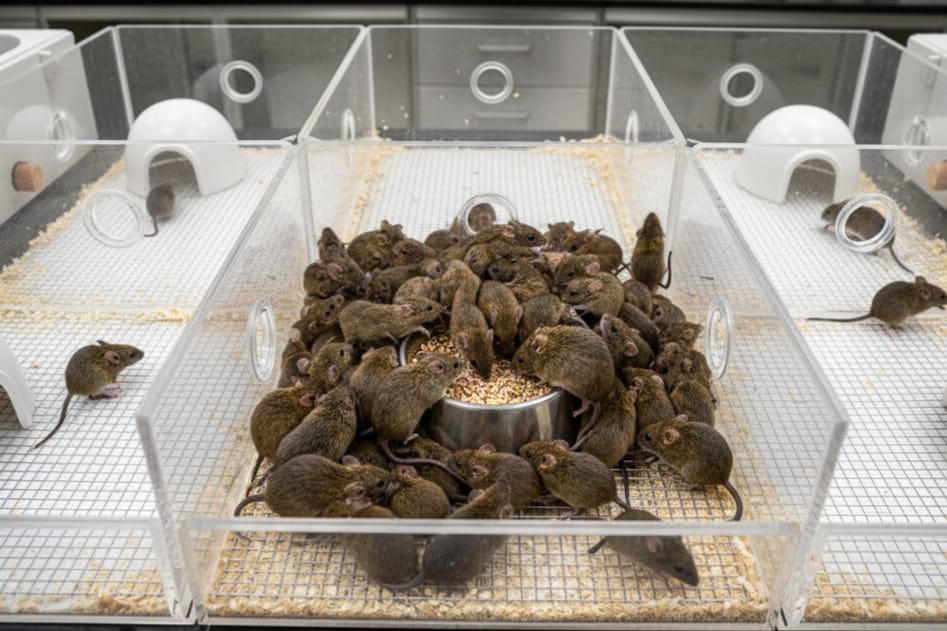
Calhoun observed that the core problem was a loss of meaningful roles and social identity for both sexes. The normal, essential functions of colony life, defending territory, mating, parenting, and nurturing, had become impossible or irrelevant in the overcrowded, purposeless environment. The mice defaulted to extremes: overwhelming aggression, obsessive isolation, or purely self-serving activities like constant grooming. Calhoun argued that life requires not just survival, but a reason to survive and contribute. When all challenging and meaningful roles vanish, abundance is meaningless, leading to a state of profound apathy and societal dissolution.
11. The “Death Phase” Begins
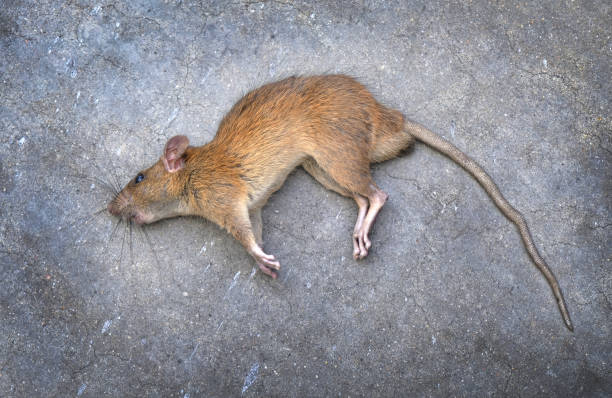
After day 600, with reproduction having nearly ceased, the colony entered the “death phase.” The population began to shrink rapidly as older mice died without new generations to replace them. The few young mice that survived were born into a dysfunctional society and exhibited no drive to mate or nest, having never witnessed healthy social behavior. This demonstrated an extinction driven not by scarcity or disease, but by a failure of social behavior. The colony was already biologically dead, even while the mice were physically alive and surrounded by plenty. The ultimate collapse was now merely a matter of time.
12. The Final Extinction
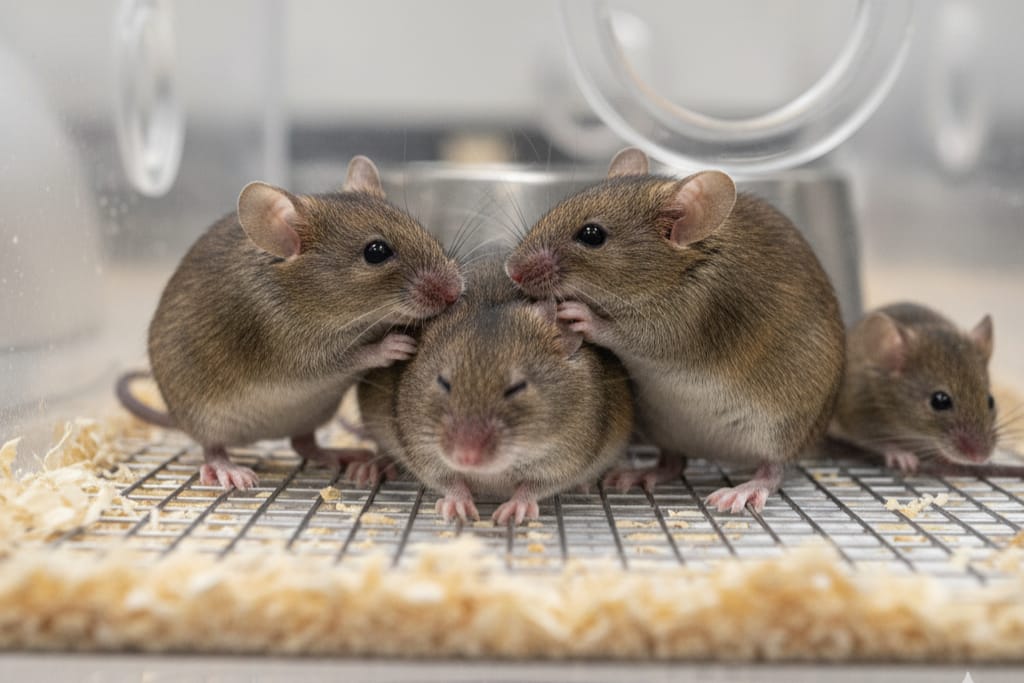
The experiment concluded with the total extinction of the colony. The last surviving mice were the socially-empty “Beautiful Ones.” Perfectly groomed, physically healthy, and free of the scars of social conflict, they lived out their final days in sterile isolation. They had abandoned the drive to reproduce or form any meaningful bond, making them incapable of perpetuating the society. The utopia of unlimited resources had culminated in a total social and demographic void. The final lesson was clear: an environment that removes all necessary struggle or purpose can strip away the will to survive as a community.
13. The Concept of the “Behavioral Sink”
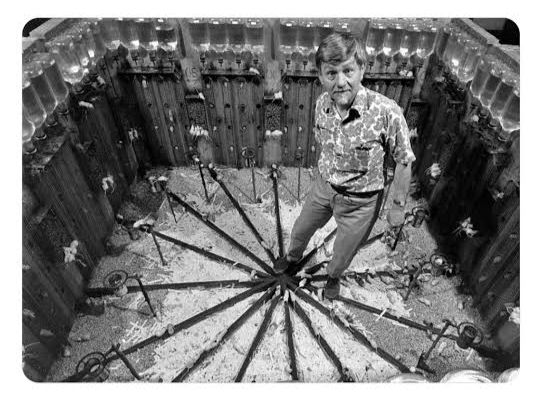
Calhoun coined the term “behavioral sink” to describe the terrifying social and psychological collapse observed in the peak of the crowding. He argued that when populations reach an intense density, the necessary bonds and behaviors that hold a society together, like parenting, defense, and mating, begin to grossly distort and fail. The mice essentially drowned in their own population density, stripped of the ability to form healthy social roles. The behavioral sink was a state of societal pathology where psychological stress, not resource depletion, became the ultimate killer.
14. Parallels to Human Society
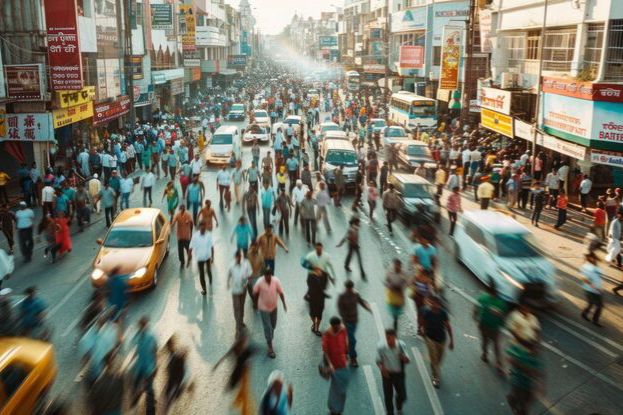
The disturbing outcome of Universe 25 immediately raised uncomfortable questions about its parallels to modern human life. Calhoun himself suggested that crowded, abundant, yet often isolating modern cities could create similar “behavioral sinks” for humans. The mice’s loss of role, rise in violence, decline in family structure, and pervasive withdrawal seemed to mirror rising issues of alienation and loneliness observed in industrial societies. The experiment was quickly interpreted as a profound, albeit non-transferable, cautionary tale about the psychological limits of density.
15. Critics Push Back

While the experiment was widely studied, it also faced significant criticism regarding its application to humans. Critics correctly pointed out that mice are not humans; unlike the mice in the enclosure, humans can adapt, innovate, and migrate to alleviate crowding stress. Others argued that the enclosed environment itself was the primary flaw, as mice couldn’t establish natural, organic boundaries or flee the experiment. Despite these valid critiques, even skeptics admitted that Universe 25 offered unsettling insights into the importance of purpose and community, especially in environments of high density and material ease.
16. A Warning About Affluence
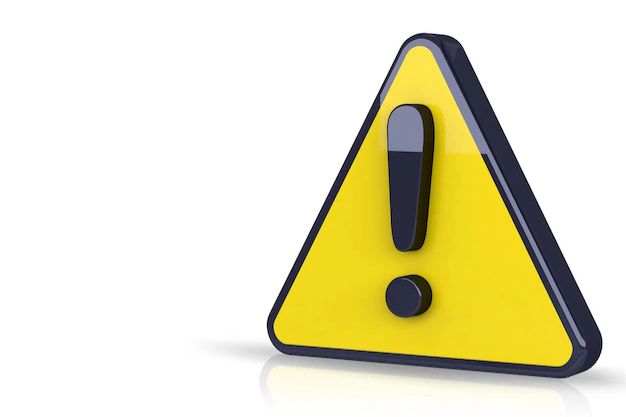
Calhoun’s work delivered a striking message: too much comfort and the complete removal of all challenge can be as destructive to a society as too much scarcity. The mice did not struggle for food or safety; they struggled to find a reason to do anything. Calhoun suggested that a society must maintain a balance between material abundance and the necessity of struggle, purpose, and meaningful contribution. He posited that without the need to strive, defend, or nurture, a society’s core survival instincts can atrophy, leading to a cultural and social decay regardless of economic prosperity.
17. The Role of Isolation
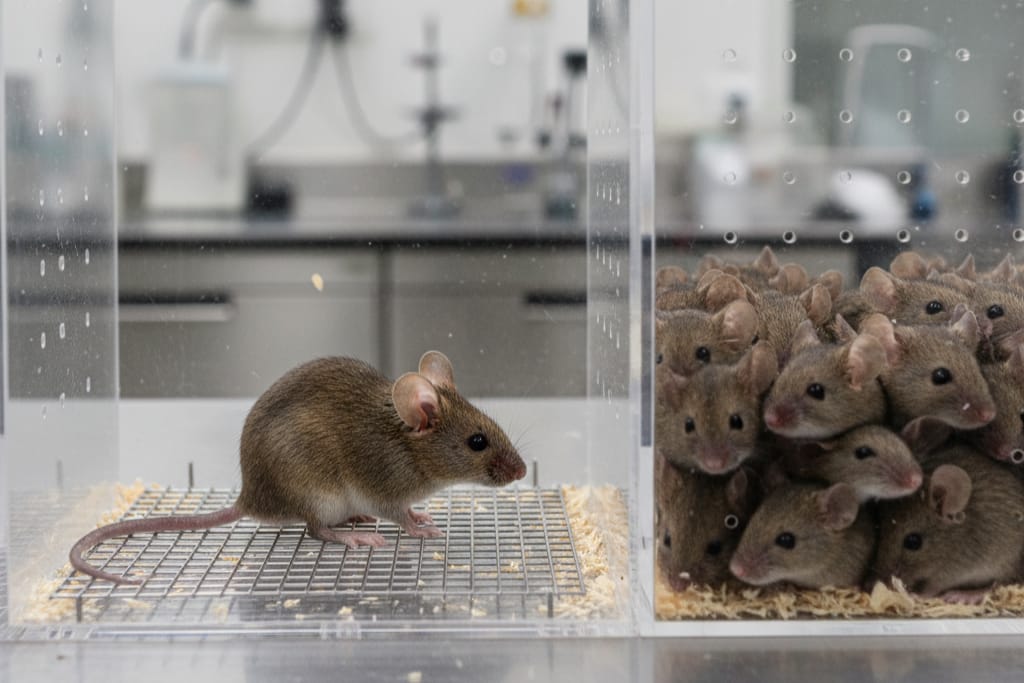
Universe 25 powerfully demonstrated that one can be utterly isolated even when constantly surrounded by others. The “Beautiful Ones” and the aggressive, withdrawn females were all choosing extreme isolation in a crowded space. They preferred a state of passive comfort and safety over the vulnerability and effort required for active social relationships. This behavior provided a chilling prediction of modern anxieties, suggesting that people may retreat into self-contained, consuming lives rather than engaging in the complex, sometimes stressful, but necessary work of building a community.
18. Repetition of the Experiment
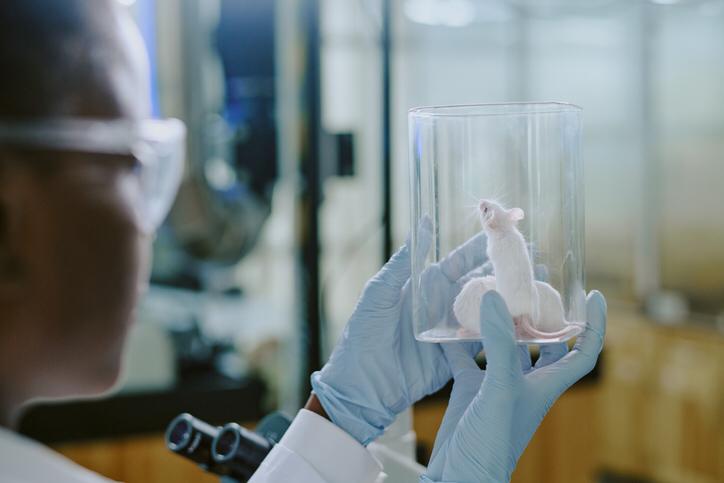
Calhoun and other researchers repeated the experiment several times with varying conditions and species, including rats, and similar patterns of social collapse emerged once the population density crossed a certain threshold. While the exact timeline and behaviors varied, the overarching theme of social disorganization, loss of role, and eventual demographic collapse remained constant. These repetitions strengthened Calhoun’s conviction that the “behavioral sink” was not a fluke but a predictable pattern of social breakdown when high density and a lack of required purpose combine.
19. Influence on Urban Planning

The experiment had a significant, if debated, impact on sociology and urban planning in the latter half of the 20th century. Planners became concerned that high-density housing projects and rapidly expanding cities might unintentionally create human “behavioral sinks.” Universe 25 was frequently cited in debates about the necessity of green spaces, community centers, and designs that foster a sense of shared purpose and neighborly interaction. It shifted the focus from merely providing housing to designing environments that actively support psychological and social health.
20. Pop Culture Impact
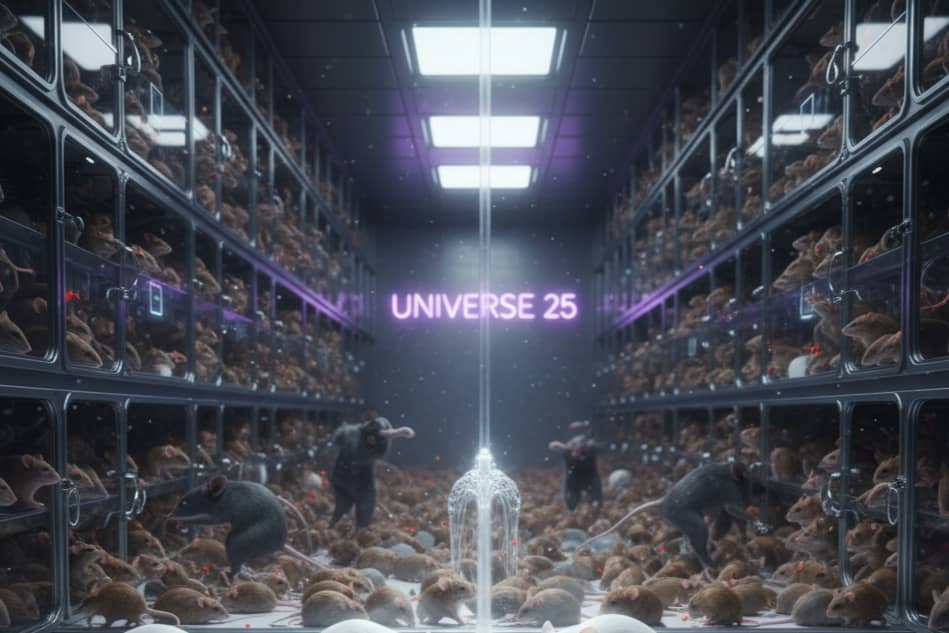
Universe 25 quickly transcended the laboratory to become a powerful cultural metaphor for dystopia and social collapse. The themes of overcrowding, depersonalization, and meaningless existence resonate throughout sci-fi and literature, influencing works that explored the dark side of “progress.” It became a shorthand way to discuss a society that is materially rich but spiritually and socially bankrupt, cementing the image of the “Beautiful Ones” as an icon of sterile, self-absorbed decay that sacrifices future vitality for immediate comfort.
21. The Debate Over Overpopulation
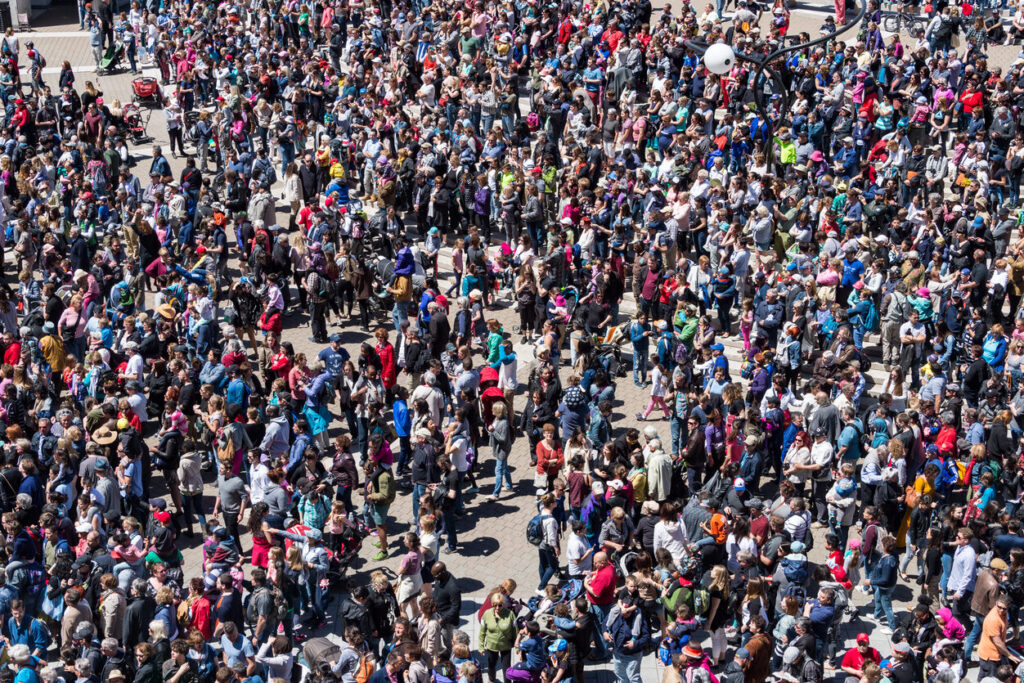
Throughout the 1960s and 70s, the findings of Universe 25 were frequently used by environmentalists and governments to illustrate the catastrophic dangers of unchecked human overpopulation. Calhoun’s work was presented as clear evidence that simple numbers, rather than just resource distribution, could doom a society. While later demographic research emphasized that inequality and resource access were more critical than sheer density, the experiment remains a powerful cautionary tale about the limits of an ecosystem, social or physical, to sustain continuous, non-adaptive growth.
22. Lessons for Modern Life
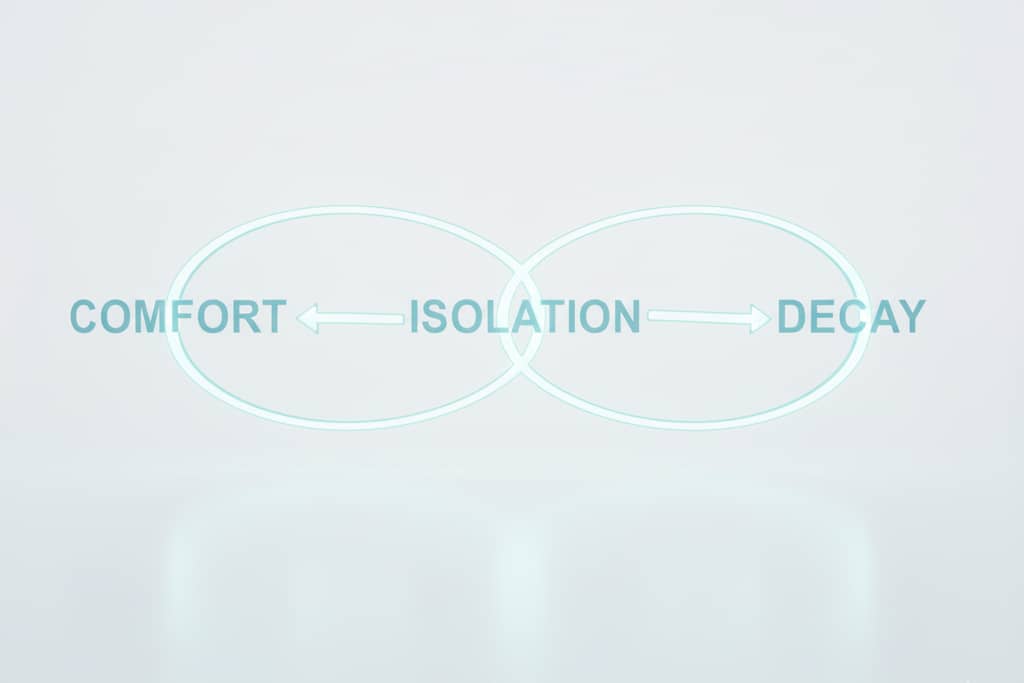
The findings of Universe 25 hold a profound and often unsettling relevance today. Societal trends like rising rates of loneliness, declining birth rates in affluent nations, and the phenomena of “deaths of despair” (suicide, drug overdose, alcoholism) echo the collapse seen in the mouse colony. The core idea that an environment of extreme comfort and minimal challenge can lead to social atrophy and loss of purpose feels chillingly familiar in an age defined by consumer ease and pervasive digital isolation.
23. A Mirror for the Future
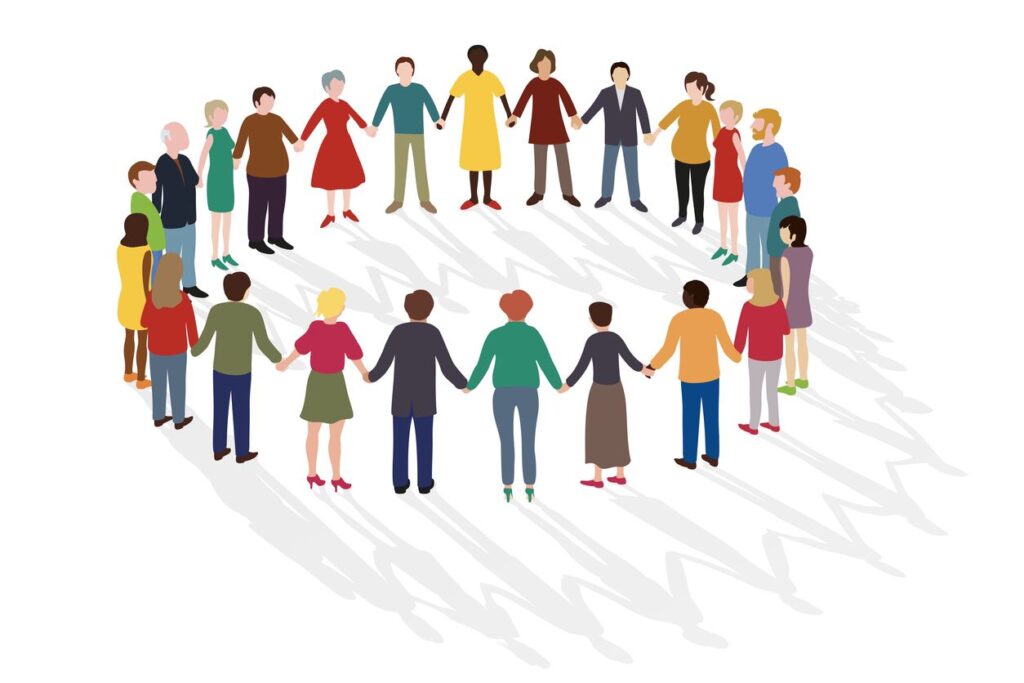
Some modern experts, looking at the collapse of community institutions and the hyper-individualism of modern society, warn that humans may be heading into their own version of a “behavioral sink.” Calhoun’s work suggests that if societies fail to foster strong communal bonds, provide meaningful economic and social roles, and encourage active contribution, material prosperity alone will not save them. Universe 25 serves as a dark mirror, reflecting the necessity of connection and shared purpose for long-term social health.
24. The Final Lesson
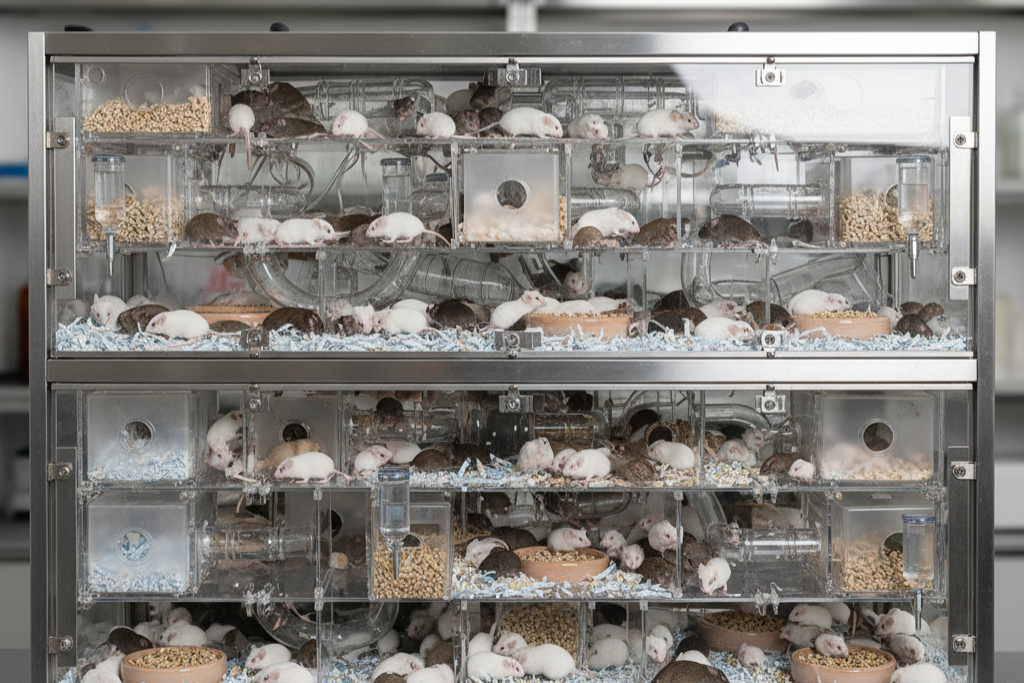
The most enduring and unsettling takeaway from Universe 25 is that the mice perished not from a shortage of food, water, or space, but from a profound loss of meaning and social function. The experiment demonstrates that for a species to thrive, mere survival is insufficient; it requires the presence of purpose, the necessity of connection, and the complexity of identity found in meaningful roles. The “mouse utopia” tragically proved that without these essential social and psychological anchors, even paradise will ultimately become a self-consuming hell. It’s truly fascinating and a little terrifying how much those mice, in their artificial paradise, can teach us about our own society.
What do you think is the most applicable lesson for life today?
This story The Mouse Utopia That Became a Nightmare: 24 Disturbing Lessons from Universe 25 was first published on Daily FETCH


